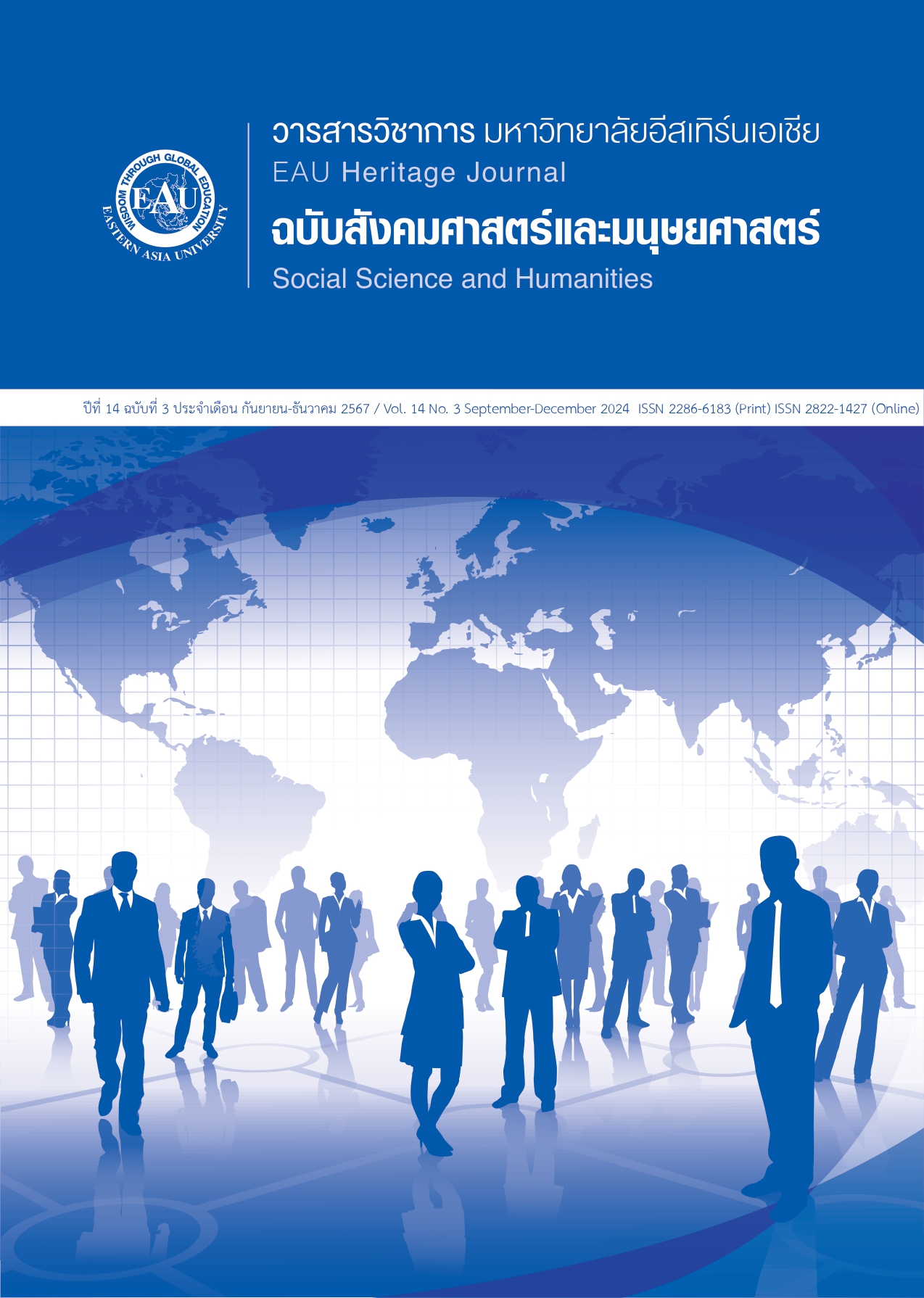Balance Scorecard Management Strategy of Large Schools Under the Office of Pathumthani Primary Educational Service Area
Keywords:
Strategy, Balance Scorecard Management, Large schoolsAbstract
The purposes of this mixed method research were 1. To study the current and desired situation 2. To analyze the external and internal environment and 3. To formulate the balanced scorecard management strategy of large schools. Population of informants were 130 administrators and teachers of large schools. The sample of 97 informants including administrators and teachers (Krejcie & Morgan 1970, pp. 607-610) were selected based on the qualification criteria of administrators and teachers. Key informants include 26 administrators or teacher from large schools. The quantitative research instrument was a 5-point scale questionnaire. The validity of the questionnaire was between 0.67-1.00 and the reliability was 0.97. Qualitative research instruments included workshop and external and internal environment analysis forms and TOWS MATRIX. Self-educated data collection. Quantitative data analysis used descriptive statistics including frequency, percentage, mean, standard deviation and PNI modified test. Qualitative data analysis was content analysis. The research results found that 1. The current and desired situation have average values at the high and highest levels respectively 2. The analysis of the external and internal environments of large schools as a whole were opportunities and strengths, respectively, the strategic direction was in the rising star position and 3. Strategies for the balanced scorecard management of large schools have 4 main strategies, The main strategies were 3.1 Strategies for building student achievement 3.2 Strategies for developing highly skilled teacher 3.3 Fund raising strategies and resources for education and 3.4 Good management development strategies and 24 sub-strategies, it will be advisable to apply the research results to large schools and the next research should be done on the evaluation of strategies based on indicators.
References
Buasamlee, E. (2023). Strategic management of small-sized Schools under the Pathumthani
primary educational service area office 1. Pathumthani: Eastern Asia University. (in Thai)
Independent Committee for Education Reform (ICER). (2017). Educational reform country plan.
Independent committee for education reform (ICER).
Kaplan, R. S., & Norton, D. P. (1992). The balanced scorecard: Measures that drive performance.
Harvard business review, 71-79.
Kongsaeng, A. (2021). Teacher of Bangchoadanusorn School. Interviews, 13. n.p.
Kountz, H., & Weihrich, H. (1988). Management. (9th ed.). U.S.: McGraw-Hill.
Krejcie, R. V., & Morgan, D. W. (1970). Determining sample size for research activities. Educational
and psychological measurement, 30(3), 607-610.
Lomlai, R. (2021). The development of a balanced management model of Ramkhamhaeng
University. Bangkok: Ramkhamhaeng University. (in Thai)
Maesincee, S. (2017). Preparing Thai people 4.0 for the first world (Video) EDUCA 2016.
Retrieved from https://www.facebook.com/educathai/videos/1229557307126092/
Ministerial Regulations Prescribing Criteria and Methods of Decentralization of Administration and
Education Management, B. E. 2007. (2007). The government gazette, 124
(24a), 29-36.
National Institute of Educational Testing Service (Public Organization). (2020). The development of
testing system of core competency for learners at the Primary School to enhance the
quality of learner in the 21st century. Retrieved from
http://www.oic.go.th/FILEWEB/CABINFOCENTER6
/DRAWER059/GENERAL/DATA0000/00000379.PDF
Pathumthani Primary Educational Service Area Office 1, Group Policy and Plan. (2020). Basic
education development plan 2020–2021 (Reviewed edition 2021). Retrieved from
Sangsiriwejthada, S. (2021). Balanced scorecard management strategies of medium sized Schools
under the Pathumthani Primary educational service area office 1. Pathumthani: Eastern
Asia University. (in Thai)
Usaho, K. (2020). Lecture on setting visions and strategies of educational institutions at
Bangchoadanusorn School. October 8. n.p.
________. (2021). Documents for teaching educational strategy management course code
Educational Administration, Faculty of Graduate Studies, Eastern Asia University.
________. (2022). Teaching elements on policy management educational strategies and
educational quality assurance (Course Code 2410063). Educational Administration, Faculty
of Graduate Studies, Eastern Asia University.





